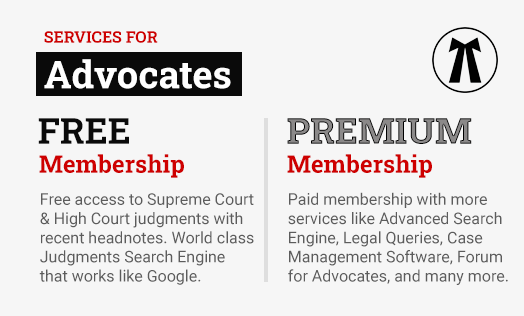Essential Tips for Effective Cross-Examination in Court
Share on:
Introduction
Cross-examination represents one of the most crucial phases of a suit trial in the courts. It is a powerful tool wielded by attorneys to assess the credibility of witnesses, impeach the narrative of the opposing side, and strengthen their own case. To master cross-examination, one needs not only to know the law but also to have a strategy, preparation, and skill in the courtroom. This article sets out essential tips for conducting effective cross-examination in court, beneficial to practicing lawyers, law students, and those interested in the workings of litigation.
Understanding the Purpose of Cross-Examination
Let’s us understand the objectives of cross-examination.
- Testing credibility: To test the truthfulness and reliability of a witness.
- Impeachment: To shed light on inconsistencies or weaknesses of the direct examination.
- Eliciting Favorable Information: Sometimes, the opposing witness can bring testimony helpful to your case.
- Creation of Doubt: To destabilize your opponent’s version of events, which may help your client.
It can be determined that a well-conducted cross-examination can change the direction of a trial. Below are the main tips for effective cross-examination in court.
Thorough Preparation is the Key
Know the Case Inside Out
Success in cross-examination begins long before entering the courtroom. Review the witness’s prior statements, all relevant documents and exhibits, and the direct examination transcript, if available. Preparation helps anticipate the witness's answers and identify areas to probe.
Understand the Witness
Study the background of the witness, which means to examine their role in the case, possible biases or motives, any prior inconsistent statements, and their demeanor and communication style. This allows one to craft tailored and strategic questions.
Structure Your Cross-Examination
Begin with strong, undisputable points to establish control. End with the most impactful questions to leave a lasting impression.
Structure your cross by topics, such as Timeline, Relationships, Contradictions, and Motive or Bias. A well-organized approach keeps the examination clear and effective.
Use Leading Questions
Let us understand ‘What are Leading Questions and Why Use Them’
What are Leading Questions?
A leading question suggests the answer within the question itself. For instance:
“You were at the scene on the night of June 4th, weren’t you?”
Why Use Them?
Leading questions allow the lawyer to control the narrative and minimize the witness's opportunity to elaborate or deviate.
Moreover, avoid asking “Why?”, “What happened?” or “Can you explain?” during cross. These give the witness control and can lead to unanticipated answers.
Maintain Control Over the Witness
Witnesses tend to evade or elaborate unnecessarily. Some techniques to exercise control include:
- Repeat: If the witness refuses to answer the question directly, repeat the question.
- Short Questions: Keep them on point and concise.
- Object When Necessary: If the witness has strayed from the matter or appears argumentative, object and ask the court to direct him to answer.
Control the flow so that the strategy remains intact.
Listen Carefully and Be Adaptable
Active Listening
Even with a prepared script, listen to the witness's real answers. Occasionally, an offhand remark can create an opening for a devastating follow-up.
Be Prepared to Pivot
If a witness suddenly makes an unexpected admission or contradiction, modify your strategy accordingly. Don't be rigid—great cross-examiners adapt in real-time.
Impeach When Necessary
Impeachment is the process of discrediting a witness by showing inconsistent statements, bias or interest, criminal background, and lack of perception or memory. If a witness gives testimony inconsistent with earlier statements:
- Confront them with the contradiction
- Confirm the earlier statement’s accuracy
- Let the inconsistency speak for itself
Done effectively, this can cast serious doubt on the witness's reliability.
Don’t Argue with the Witness
Avoid Confrontation
Arguing with a witness or showing frustration can backfire. Judges and juries often respond poorly to aggressive tactics.
Maintain Professionalism
Stay composed, polite, and in control—even if the witness is evasive or hostile. Let your questions do the damage, not your demeanor.
Know When to Stop
It is crucial to know when to stop during cross-examination in court. Once you have made your point, move on. Pushing too far can undo your gains or give the witness a chance to recover. Also, end on a high note. Conclude with a strong point that aligns with your theory of the case. Leave the judge or jury with a clear, favorable impression.
Apart from this, one must tailor an approach to the courtroom. In jury trials, clarity and simplicity are key. Avoid legal jargon and build a story the jury can follow. In bench trials, focus more on legal technicalities. Also, adapt to the judge’s style, as some judges are more interventionist, while others allow lawyers broader latitude.
Conclusion
Effective cross-examination is a blend of preparation, precision, and presence of mind. It is not about theatrics or aggression, but about strategy and control. By mastering the art of asking the right questions in the right way, lawyers can expose weaknesses in the opposing case, bolster their arguments, and ultimately persuade the court to rule in their favor. For every legal practitioner, refining cross-examination skills is a continual process, but these essential tips provide a strong foundation to build upon.


